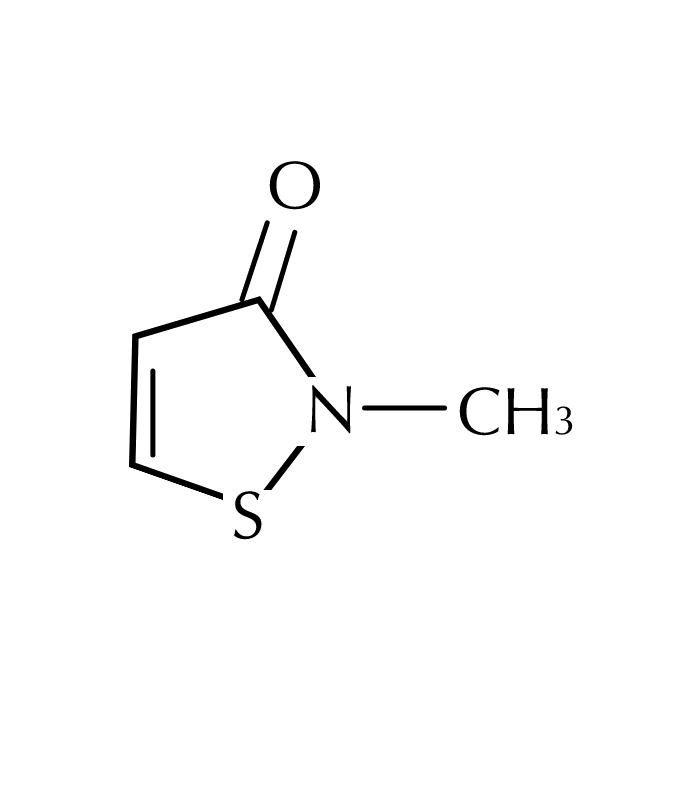What Are Methylchloroisothiazolinone and Methylisothiazolinone?
Methylchloroisothiazolinone and Methylisothiazolinone are two ingredients used in skincare and cosmetics formulations to help preserve products against the growth of bacteria, yeasts, and fungi. They are generally used in water-based formulations rather than oil or wax-based products.
Methylchloroisothiazolinone and Methylisothiazolinone have a slightly bad reputation in the beauty industry as they are considered a standardized chemical allergen. This means that they have been associated with allergic reactions.

Methylchloroisothiazolinone and Methylisothiazolinone
The good: Methylchloroisothiazolinone and Methylisothiazolinone help to ensure the safety of products by preventing the growth of bacteria, yeasts, and molds.
The not so good: Methylchloroisothiazolinone and Methylisothiazolinone are known allergens and while their use is limited to low concentrations they can be irritating to some skin types.
Who is it for? All skin types except those that have an identified allergy to it.
Synergetic ingredients: Works well with most ingredients
Keep an eye on: Many blogs and articles will list these two ingredients as ‘toxic’ ingredients. This isn’t actually entirely true. Toxicity is dependent on concentration, anything can be toxic in the right concentration. The main issue with Methylchloroisothiazolinone and Methylisothiazolinone is the increased risk of irritation and allergy.
Why Is Methylchloroisothiazolinone and Methylisothiazolinone Used?
Methylisothiazolinone and Methylchloroisothiazolinone are preservatives. Preservatives are one of the most important parts of the formulation process. Preservatives can be either naturally-derived or synthetic in nature and are designed to prevent the growth of bacteria, yeasts, and molds.
Preservatives are important to any formulation as they ensure the safety and quality of the product, however, they are especially important in water-based formulations. This is because water-based formulations are more susceptible to spoilage and microbial growth, as water is important to the growth of many microbes. Contamination of your product can occur through use, for example, if you use your hands to scoop out the product or even if you leave the lid off the product for a period of time.
When a product is spoiled by microbial growth it can cause discoloration, unpleasant odors, or disruption of the texture and consistency. However, outside of the sensory aspects of the product, spoilage can also increase the risk of infection or irritate the skin.
While Methylisothiazolinone is occasionally used by itself in formulations it is usually combined with Methylchloroisothiazolinone. Historically Methylisothiazolinone and Methylchloroisothiazolinone were used in both rinse-off and leave-on products. Rinse-off products are products such as cleanser, soaps, shampoos, etc., they are designed to be rinsed off the skin after a short period of time. Leave-on products are products such as moisturizers, lotions, makeup, etc., and are designed to be left on the skin. As you would imagine they have different levels of interaction with the skin due to the different amounts of time they spend on it. This difference can determine safety and sensitivity.
More recently, due to concerns about increased rates of skin sensitivity to Methylisothiazolinone in leave-on formulations, some manufacturers have removed these ingredients from their leave-on products.
Are Methylchloroisothiazolinone and Methylisothiazolinone Safe?
According to the US Food and Drug Administration, Methylisothiazolinone and Methylchloroisothiazolinone are considered to be allergens. In high concentrations, outside the realm of use in skincare, Methylchloroisothiazolinone can cause burns and irritant the skin. Most of the reported reactions to Methylchloroisothiazolinone were noted in the 1980s and 1990s in leave-on products at a higher concentration than currently used.
Since these issues with allergic reactions, Methylchloroisothiazolinone has been mostly removed from leave-on products and are only used in rinse-off products in low concentrations.
According to the U.S. Food and Drug Administration (FDA), methylchloroisothiazolinone is a standardized chemical allergen. The current rate of contact allergy or the likelihood of having an allergic reaction is about 8 percent.
The concentrations that Methylisothiazolinone and Methylchloroisothiazolinone are currently used in, is up to 15 parts per million or ppm in rinse-off products and 8ppm in cosmetics. The Cosmetic Ingredient Review Expert Panel, an independent group responsible for evaluating the safety and efficacy of skincare and cosmetic ingredients has reviewed the available data on Methylisothiazolinone and Methylchloroisothiazolinone. The Expert Panel found the two ingredients to be safe for use in current concentrations and indicated applications. The data suggested that Methylisothiazolinone when used by itself if safe up to 100ppm.
In 2013, the Expert Panel re-evaluated new data on these two ingredients. This new data suggested that Methylisothiazolinone was more allergic to leave-on products than previously understood. In response to this finding, the Expert Panel concluded that Methylisothiazolinone and Methylchloroisothiazolinone are safe in their current uses and concentrations. However, the Expert Panel argued for lowering the concentration of Methylisothiazolinone in leave-on products to reduce allergic reactions.
The Expert Panel also cautioned that individuals who know that they are allergic to Methylisothiazolinone should avoid personal care products that contain Methylisothiazolinone.
References:
CIR, 1992. ‘Final Report on the Safety Assessment of Methylchloroisothiazolinone and Methylisothiazolinone’, Journal of The American College of Toxicology, vol. 11, no.1.
Pónyai G, Németh I, Temesvári E. Methylchloroisothiazolinone/Methylisothiazolinone and Methylisothiazolinone Sensitivity in Hungary. Dermatol Res Pract. 2016;2016:4579071.







